Who Is the Man Building Priceless Real Estate for Broadway?
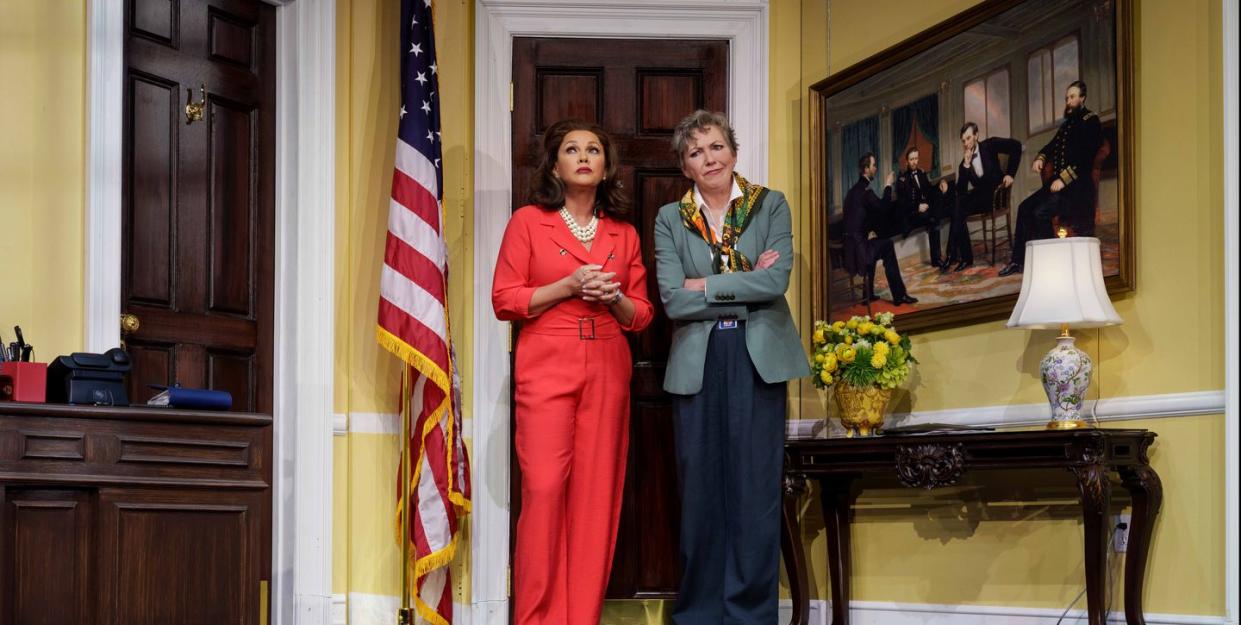
- Oops!Something went wrong.Please try again later.
The legendary Mel Brooks has called him "a genius guy who does crazy sets," and that is just about the only introduction needed for Beowulf Boritt, the Broadway scenic designer who has won numerous awards—including a Tony in 2014 for Act One–for his visionary point of view, highly imaginative flair, and unapologetically daring approach to his craft.
Boritt is now possibly looking at a second (even a third) trophy—as the set mastermind for both the musical Flying Over Sunset and the play POTUS, he has been nominated for two Tony Awards this year.
While these two productions are wildly different in tone and subject matter, they do share a common visual thread—each is set in a one percenter domicile. In Flying Over Sunset—which takes the very true tales of LSD experimentation by actor Cary Grant, playwright-turned-Congresswoman Clare Boothe Luce, and writer Aldous Huxley and imagines what would happen if the three of them got high together—Boritt designed a sprawling Malibu glass house that could double as status symbol and a trippy facade to project the characters' insecurities.
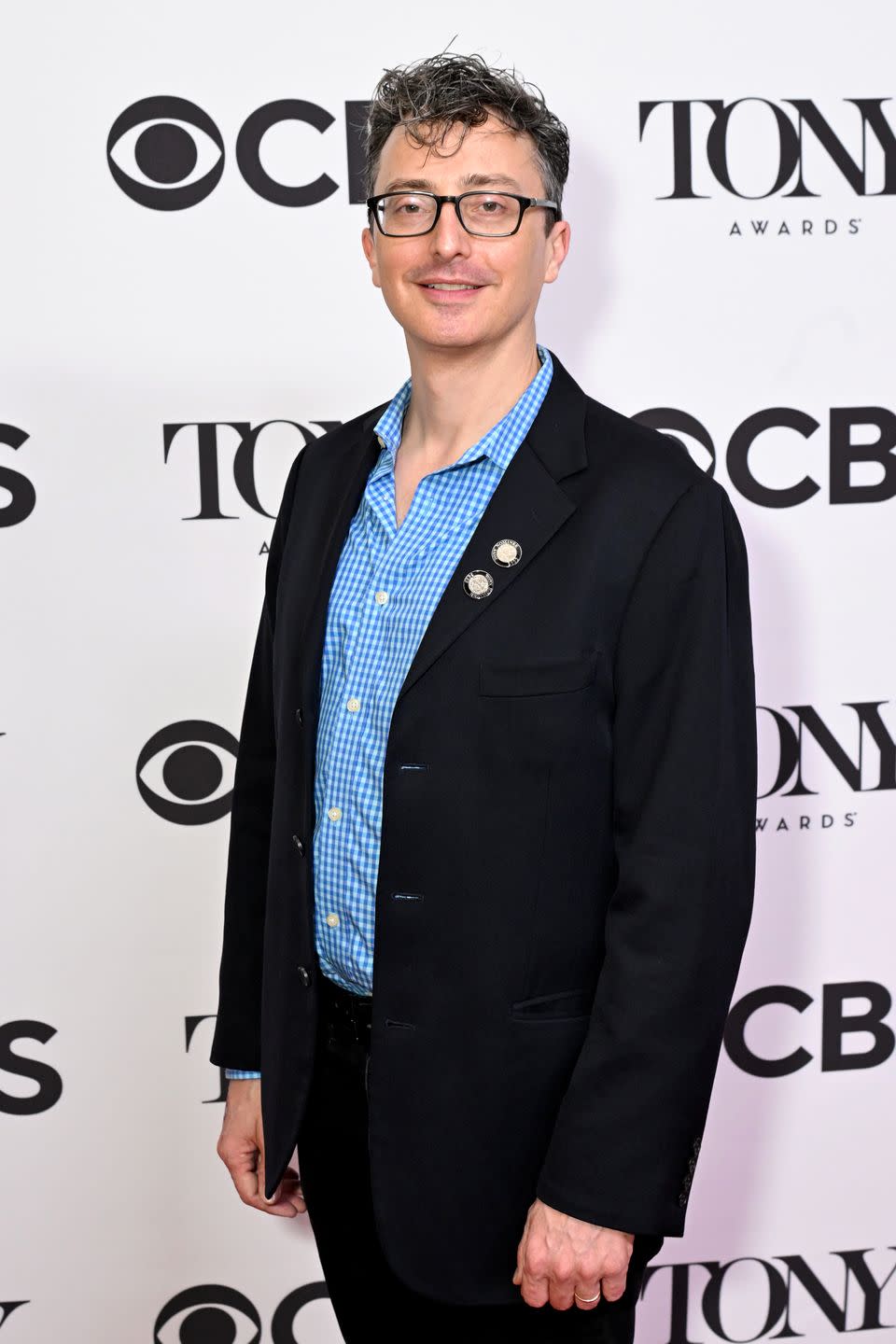
In the case of POTUS, a raucous feminist farce about seven extremely capable women tasked with keeping a very incapable commander-in-chief out of trouble, all hell breaks loose in the White House. Even when tasked with recreating the stately interiors of America's most important piece of real estate, Boritt found ways, subtle and otherwise, to infuse a bit of irreverence. "No matter how much research I do, I remind myself that I'm an artist, not an anthropologist," he says. "I want to get some details right and be accurate in a way that gives truth to the art. But I will certainly stray away from reality when it tells the story better—and in a more exciting way."
Ahead of tonight's Tony Awards, which will air on CBS at 8 p.m. EST, T&C spoke with the scenic designer about how he came up with his masterpieces.
You're nominated for the set designs of two shows—the play POTUS and the musical Flying Over Sunset—that are so stylistically different. How did your approach to these projects differ?
With POTUS I dug deep into images of the White House over the Biden, Obama, and Bush administrations—not the previous administration—to see what stays the same, what changes from administration to administration, and then picked and chose details that spanned all of them because we weren't trying to make it be any particular president.
Then for Flying Over Sunset, a made-up story based on real people, I tried to convey how LSD affects the human brain and makes it expand and contract and twist and turn, but also the power of our imaginations and what the mind can do. At times the set was trying to do something visually beautiful and wonderful and create this fantasy world; at other times it was trying to create the vast emptiness that we feel when go into our own spiral in our brain and get trapped in an idea or a fear.
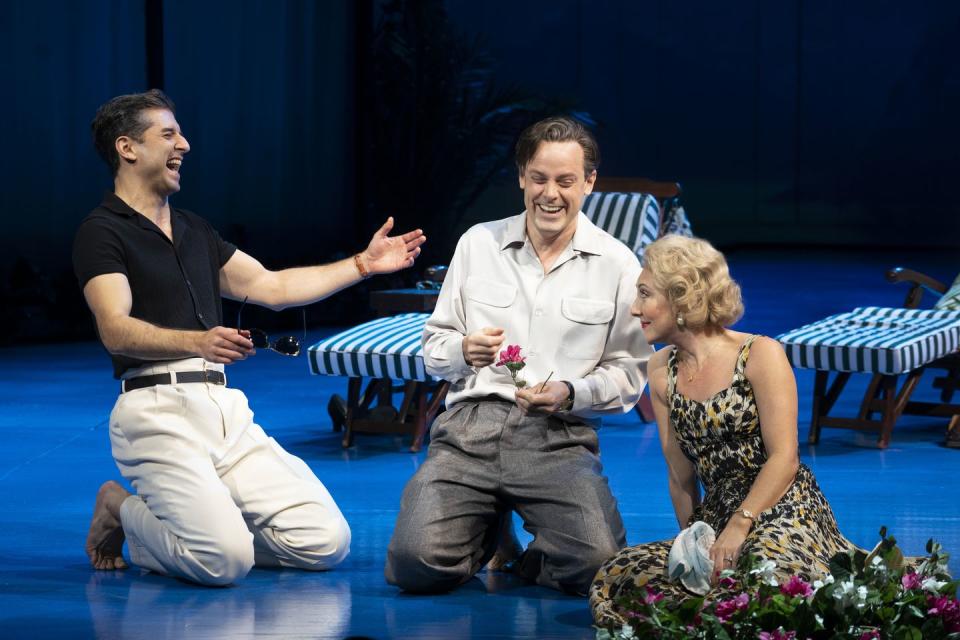
Flying Over Sunset's trio of characters convene in a fictional oceanfront Malibu estate owned by Clare Boothe Luce to take LSD. How did you balance the hallucinogenic ambiance of the scenes with depicting a fabulous California home of a high society figure?
I did a lot of research into the Mid-century modern architecture that was spreading through Malibu at the time and that led us to this idea of a big house made of real glass—we don't always do that on stage, we often use plastic—to make the reflections incredibly true and so you don't end up with a fun house mirror. That seemed important in a show that is about people looking at themselves.
And then into that we built a scrim curtain onto which our production designer could actually project video onto the house so that it came to life in that way that began to mirror the characters' inner lives. So at times it could be just a very fancy, elegant, literal house. Then it could also get more emotional. And then we played into the fact that it's California and this tropical environment—we covered it with bougainvillea and put a big palm tree which made it feel cared for and wealthy.
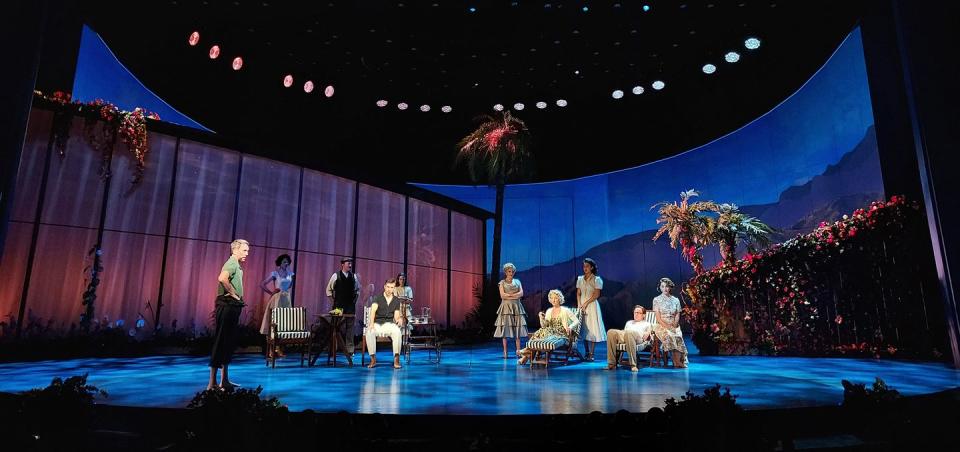
Hilarity, outrageousness, and utter chaos are the hallmarks of POTUS. How did you achieve a sense of visual friction between the farce taking place onstage and its stately background?
My guidepost on POTUS was—and I think this would be true of almost any farce—to make a place that looks fragile so that it feels like the zaniness of the play could break it and destroy it in some way. That raises the stakes. And in POTUS it gets to ridiculous levels because people are literally destroying the space as they run through it. So it was about creating something that looked beautiful and wonderful so that when it starts to get messed up, you cringe even more.
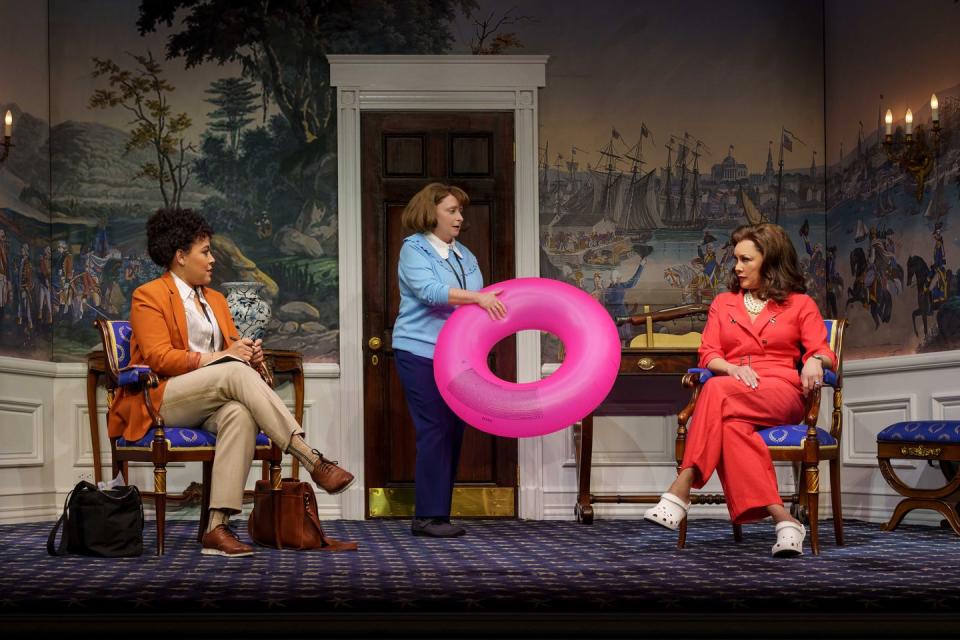
And you designed the whole set as a giant turntable.
Because of the pace of the play—in POTUS we go from one place to the next very quickly, and as the show goes on it gets faster and faster and faster. I wanted to create a set that could have continuous action in a filmic kind of way so that you could track a character walking through the door, into the next room, then into the next room. What was key in POTUS was not having any dead time. You want the story to keep evolving.
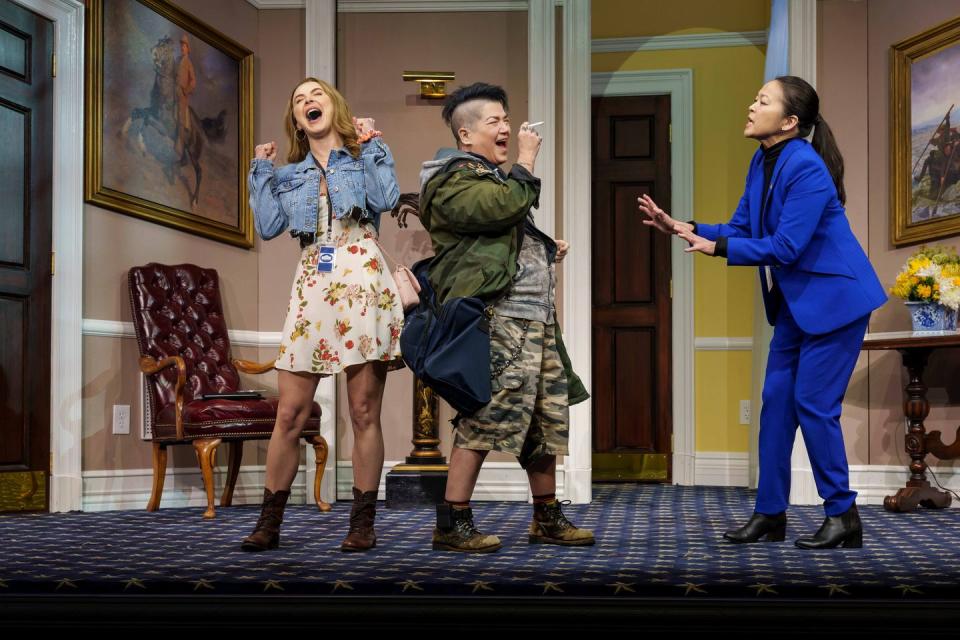
What were a few specific design details you pulled from previous administrations?
There is a big bookshelf at the back of the office of the press secretary and different administrations have done different things with it. We hung a bunch of world clocks because that seemed to indicate power and reach, and this was a detail from the Bush administration.
And I found a picture of [President Biden's former press secretary] Jen Psaki's desk where she had a little ceramic elephant on it and I thought that was a fun detail to copy because as a set designer I always put an elephant on my set—it's just a little personal signature. Then once we got into the production, I realized this makes it seem like they're Republicans, so I got a couple of donkeys and put those around the set, too.
What other Easter Eggs have you incorporated into the set?
In the copy of the diplomatic reception room at the White House, which is covered in a mural depicting American revolutionary war scenes, there is a closet that is key to the story. The door opens a couple of times throughout the play and audience members with very sharp eyes would see there is a big stack of cardboard boxes in there as if it's like a storage closet in the White House. One of them says "Lincoln bedroom sheets" on them, but all the rest are allusions to presidential scandals. I think most audience members won't notice but every so often somebody will tell me they caught a glimpse. Those little details, I think they're fun. They get at the point of the show and the message that it's trying to pass along while at the same time adding a bit of spice.
You Might Also Like

